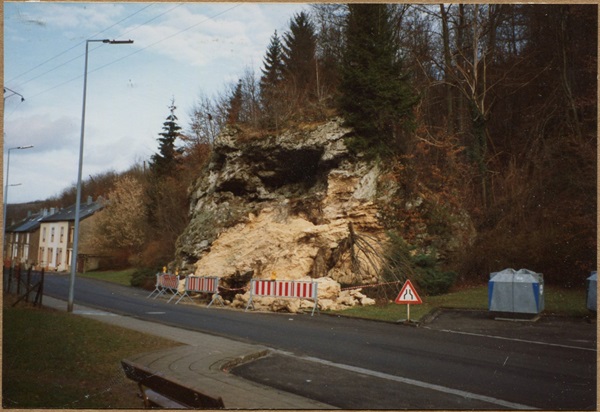As part of a local history series in collaboration with local author and tour guide David Heal (
Luxembourg Battles), this article looks at the local history of Lasauvage.
Based on David Heal's extensive research spanning several decades (and documented in the form of place-name index cards), the series aims to present interesting local historical events and facts linked to places in (and around) Luxembourg.
Next up: Lasauvage. Many people may know that the village is named after a woman who lived in the woods there and died when a cliff slid down opposite the church. But how many realise that the church is modelled on the Sacré Coeur in Paris because the village priest went to Paris on holiday, saw the Sacré Coeur and persuaded the village to build a small copy of it?
David recalled how he was on a walk through the village about 40 years ago and stopped at the church, when suddenly a Frenchman who was with him pointed to a war memorial beside the church door and said: "I knew him, I often wondered what had happened". It commemorates the death in the village on 10 May 1940 of a young French officer during fighting there.
One surprising fact is that this village must be the one of a very few (or may even be unique), in having its village cemetery across the border in France. The stream is the border, but to get to the cemetery one has to cross a small bridge into France.
In 1940, before the Nazi invasion, there was much discussion about what the government and royal family should do when (not if) there was an invasion. In 1914, they had both been, effectively, captured because the Luxembourgers believed that as guarantor of their neutrality, the Germans would not invade. That had led to all sorts of political and constitutional problems which continued to plague the country into the 1920s and beyond.
Eventually, it was decided that Lasauvage, which lay under the protection of the Maginot Line artillery, would become a redoubt, much as a small part of Belgium had stayed in Allied hands throughout the First World War and remained under the control of the Belgian government and king. Conveniently, added David, there was in the village a weekend house belonging to a director of ARBED. This was to be requisitioned and used as their headquarters. If one knows where to look, the house can be found, but there are no signs or anything else.
In the event, the idea was never used and the plan was abandoned on the night of the invasion.
Also in the village is a museum which shows among many other things how the iron ore mines there were used as a refuge by those fleeing the Gestapo. There is also a "splendid" small geological museum, David noted, as well as what is supposed to be a "very good" restaurant.
During the summer months, it is possible to get a small train from Fonds de Gras through the hill to Lasauvage and on to near Longwy.
There are a lot of remains of the iron ore mines to be found in the valley, but please be careful, warned David. There are ponds where the ore was washed and these have warning signs on them for a good reason. They are quite deep and if one gets in there, one will have difficulty getting out.
 The witch of Lasauvage (from which it gets its name) is said to be buried under this rock;
Credit: David Heal
The witch of Lasauvage (from which it gets its name) is said to be buried under this rock;
Credit: David Heal
 The witch of Lasauvage (from which it gets its name) is said to be buried under this rock;
Credit: David Heal
The witch of Lasauvage (from which it gets its name) is said to be buried under this rock;
Credit: David Heal








